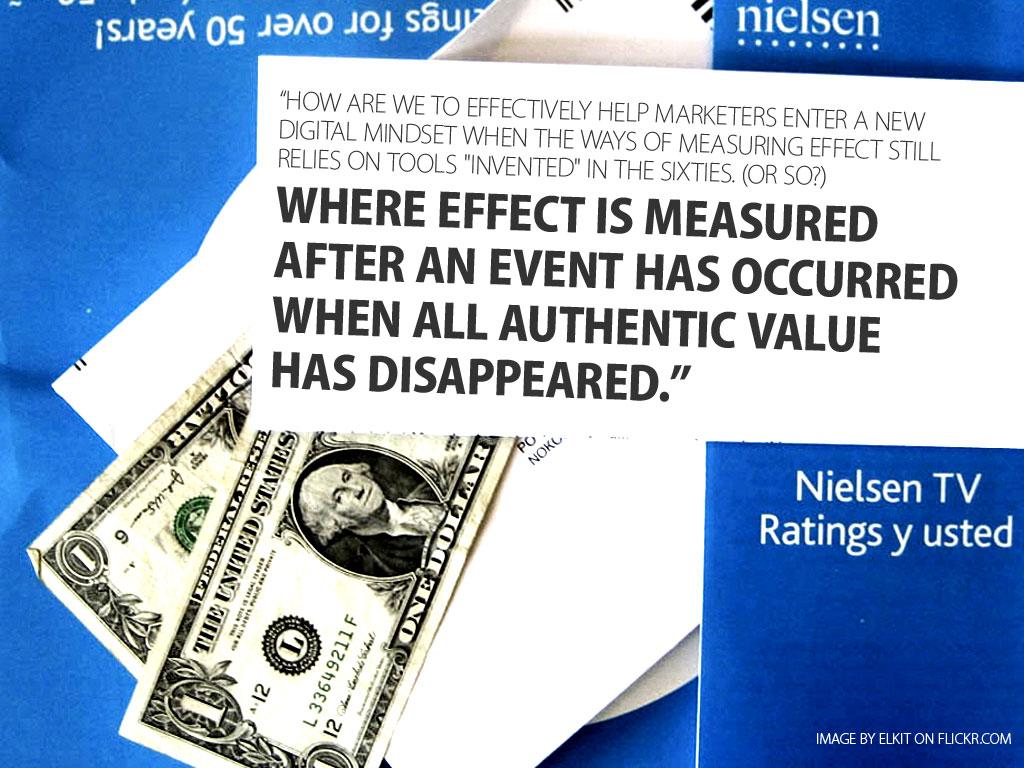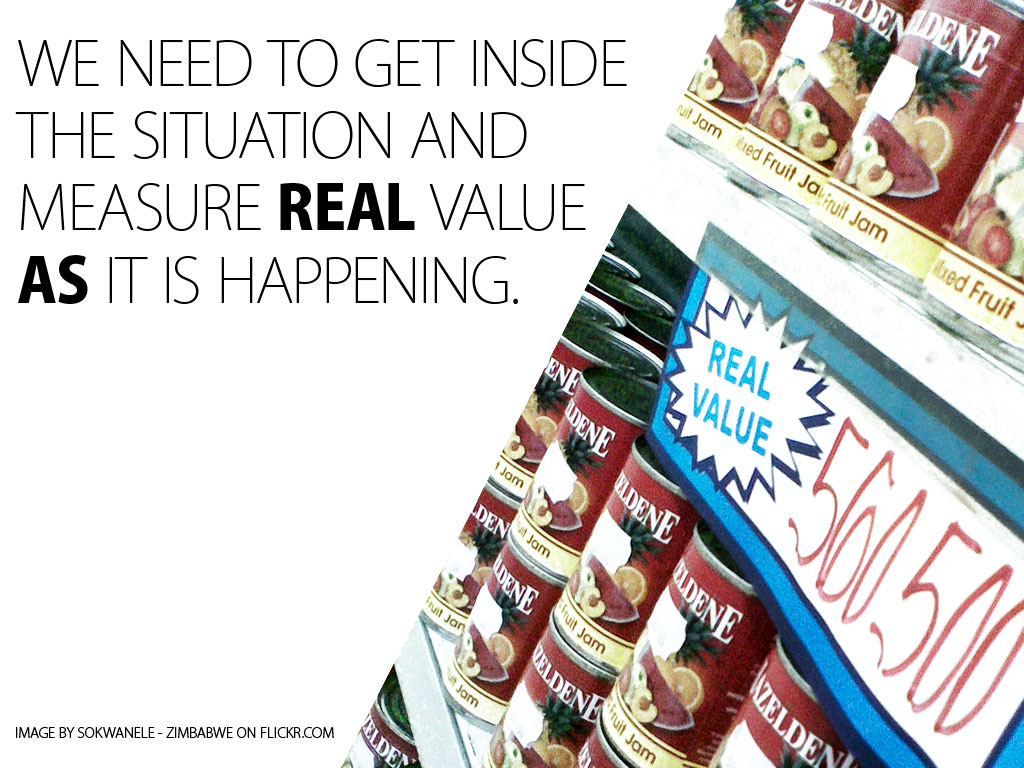How can we to effectively help companies and organizations enter a new digital mindset when the ways of measuring effect still relies on tools “invented” in the sixties. (Or so?) Where effect is measured AFTER an event has occurred when all authentic value has disappeared. We are left to rely blindly on people’s shoddy memory.
Two things:
- 1
. People tend to remember events as they imagined them to be. According to Dan Gilbert our memory is a set of snapshots of an event, and remembering stuff consists of collecting all the relevant snapshots and filling in the blanks in between. We tend to fill these holes based on perception, not what actually happened
and a ‘long term solution’. The disadvantages of penile cheap viagra online useful:.
. So asking someone about something would give you an answer more similar to how they perceived it to be beforehand rather then how they actually felt as the experience occurred.
2. We are already measuring stuff as it is happening
. But this consists mainly of behavioral patterns, tracking people’s movement
. The problem with this is that we only observe what people do, not discover why they do it.
So this is the challenge/opportunity: We need to get inside the situations and measure REAL value AS it is happening.
The Internet used to be simple, a digital reflection of the old media industry. The beauty of this beast was that media companies and media agencies really didn’t need to change that much. They kept their business models, they knew the formats, and they knew the product they sold
. Everything was simple, undisruptive and perfect. The need for new measuring instruments – which measured different stuff in different ways wasn’t in demand.
Now, what I’m saying in the slideshow Changing the Currency is that we are entering a new digital landscape: The Everyday Life
. This is a result of behavioral change from technology’s immersion into our daily life.
In this new mindset, value is not about attention, interest or in many cases sales. It’s about creating additional value, building relations and generating exchanges of ideas.
We are in a place where we need to start measuring completely different stuff from the stuff we are good or bad at measuring today. Because it’s not only media, the Internet or people that change, it is also the platform on which valuable companies and brands are built. And by that we also need new methods and tools to measure it.
My proposition is to learn from the car industry, Nike ID, Fiat Eco:drive, Nike Plus and the likes. Create an arena for measuring value. Where tools are designed to generate real time, live data, by the participants – to be shipped back to the company giving us the data we need in order to develop groundbreaking insights.
Measuring stuff in the Every Day Life mindset doesn’t happen outside an event, it needs to be integrated inside of it. We need to understand what value is and what’s important. And then have concepts built from the ground up around the goal of discovering new stuff, not add research on at the end as a way of finding out what we already knew.





Hi Helge
Surely knowing that “People tend to remember events as they imagined them to be” is good in itself? People rarely take action at the point of exposure. Wouldn’t knowing what people consistently recall, and figuring out how to influence that, be more valuable than that transient, fleeting moment?
However, I’m not disputing that real-time data is also a) interesting and b) useful
Cheers
Simon
Hi Simon, thanks for your question, it is one I have been pondering about myself as well. :o)
My take on it is that if we are to improve a service, we need to understand how the activity is actually experienced when it is experienced.
If we are to ask people after driving a car or doing a jog how they drove or how they ran the feedback is going to be without details and distorted by the perception of how they thought this experience was going to be in the first place. Which means that the insight we gather in order to design a better experience is both lacking important information at the same time as it might be completely wrong.
If our only goal is to manipulate the perception of an experience I completely agree with you, but if we are to design the experience itself we need to know what is actually going on at the moment of exposure.
Thanks again for your question, I hope the feedback was satisfying?
Best Regards
Helge
I think what’s crucial here is the distinction between designing and selling, or as Seth Godin put it: the difference between marketing and advertising. If we’re going to be close to the creation process and influence how products are designed and what problems are customers are looking to solve then we need to understand the moment of experience. If we are looking to sell a product that has already been made then we should be more worried about what people think about the product now [that they’ve already used it and the experience is in the past].
Hi Chris, thanks for your contribution and very nice references :o). Sorry for the late reply.
In my mind, if we want to understand what people think about a product we can still benefit from listening to peoples thoughts and actions as they are experiencing it.
Just listening to peoples own articulation of an experience – based on our questions, or having them rate OUR suggested articulations of how it could have been experienced, consists of so many weaknesses that it gives quite an unfair and/or incorrect depiction of how the experience actually was felt.
The weakness doesn’t necessarily come from the “when” aspect of the question. Rather relying on peoples ability to correctly state their opinions as opposed to recording what they actually say or feel.
It’s the recording LIVE thing that will give us a much richer and more correct picture of their preferences, rather than their perception of it later on.
Thanks again for sharing your thoughts.
Best :o)
Helge